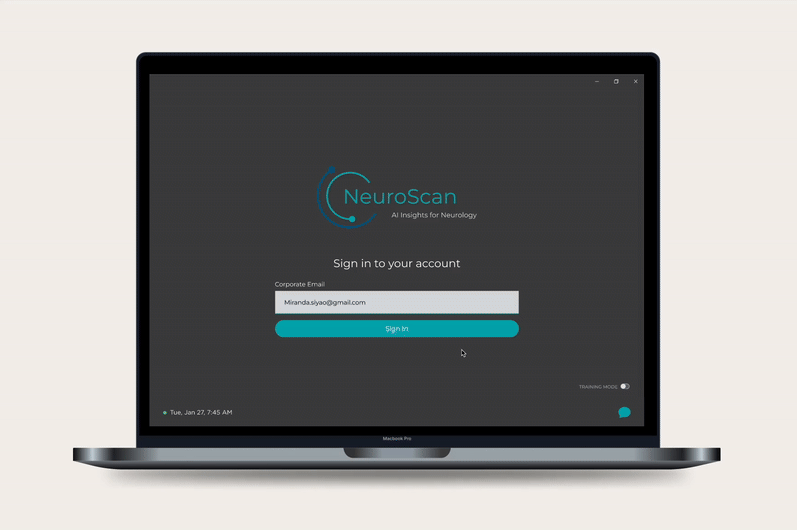NeuroScan
AI for Neurology
Role
Lead UX/UI Product Designer
Timeline
12 weeks
Process
UX/UI Design, Usability Testing, Design System
Team
Product Manager(1), Program Managers(1), UI/UX Designer(1), Engineers w/
multiple levels(3), Eng Leads(2), Regulatory Officer(1), CX Managers(4)
Disclaimer: Some project details have been modified to protect confidentiality.
Impact
Background
NeuroScanCore is an AI diagnostic system that autonomously detects neurological disorders, such as early-stage cognitive decline, at the point of care.

Users
Operators, typically nurses or medical assistants. Their responsibility is to guide patient through image acquisition and capture sufficient images for the AI diagnostic system. The are looking for accuracy and efficiency.

Business
Goals
-
Reduce training and support costs for new operators
-
Improve efficiency and accuracy to speed up the exam workflow
-
Increase our compatibility with other camera distributors
Design Process – Research & Iteration
Identify the user problems and opportunities in the current flow
Through discussion with Customer Success Managers(20+) and current customers(10+), we learned that the key reasons of keeping customer reaching their compliance goal
40%
of first retake passed among all the current customers
95%
current customers have more than 1 operator at a single site
6+
prospective customers use a camera that we don't currently support

Solution
User testing to test concepts and assumptions
I mapped out alternatives to conduct A/B testing and user interviews over core product features to validate the following assumptions:
-
Vertical instruction layout
-
Visual guidance
-
Generic UI

Design: information architecture update
To align with natural eye movement and reduce cognitive load, I decided to change the horizontal list to a vertical one. Vertical layout also works well for future improvement by organizing information more effectively.
Before

After

Design: UI enhancements
To create a simple exam workflow for non-medical professionals, I incorporated graphics and camera UI to help users quickly understand complex steps without relying on text.

Design: UI enhancements
To assist the operator in identifying potential issues, sample images are provided as references, helping them determine the possible reasons for retaking certain images. Detailed troubleshooting tips are provided to ensure a smooth image retake process. Additionally, a chat function is integrated to allow customers to connect with a support team member when further assistance is needed.
Before

After

Design: Operator Log-in feature
To protect patient health information, only authenticated and authorized user can access the product. With user login information, we can track key behaviors such as exam duration, exam success rate, error rate, types of errors, and operator feedback.
Login Screen

Resume Exam

Final Prototype

Reflections
Working on exam workflow redesign help me shape better design process and practice taking feedback and reflect them in design iterations
Constructive feedback
Embraced constructive feedback by actively seeking input from peers and stakeholders, then translating it into clear design improvements.
Process
Refined design process through iterative testing, documentation, and alignment with cross-functional teams to ensure user needs and technical feasibility.
Work with constraints
Learned to design within constraints by balancing clinical requirements, timeline, and engineering limitations while maintaining a strong user experience focus.